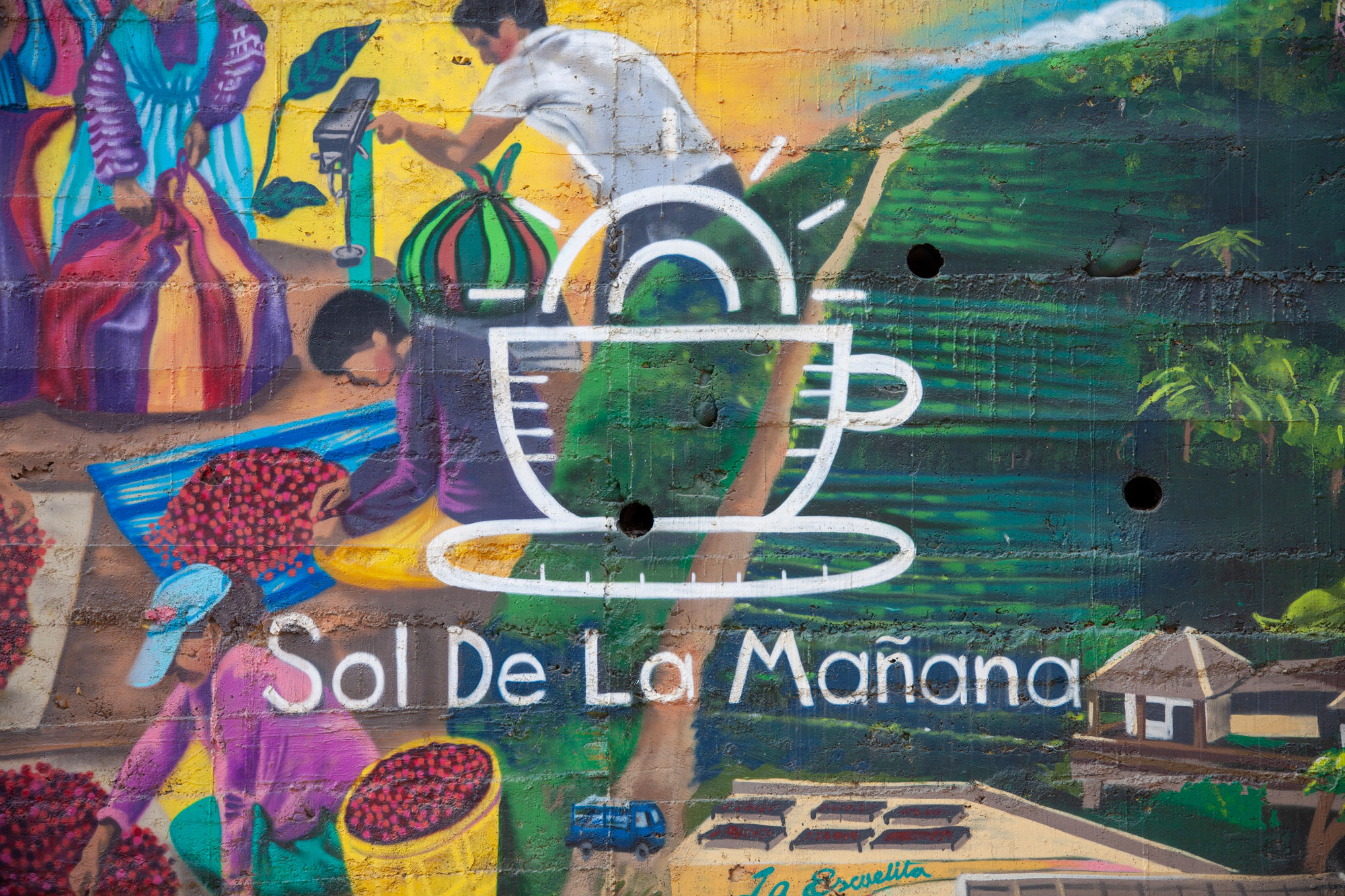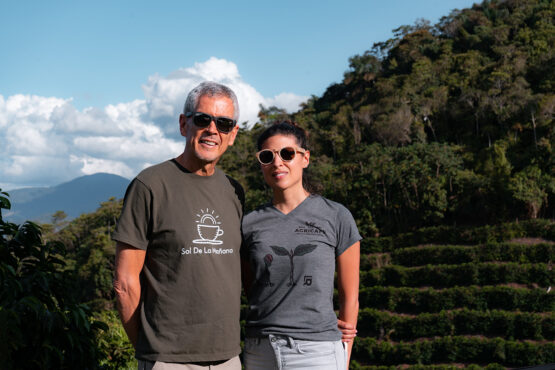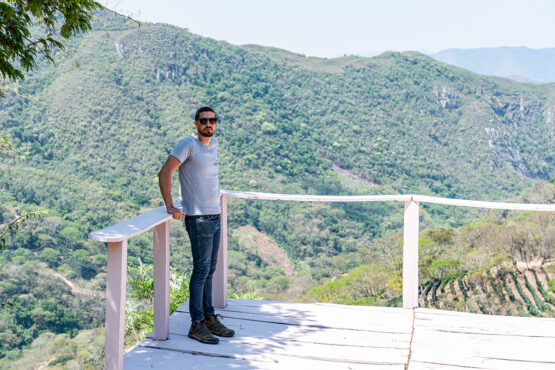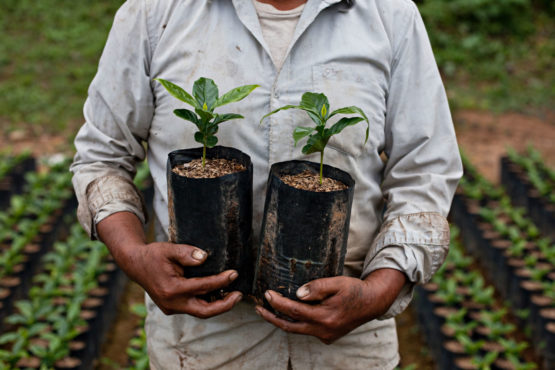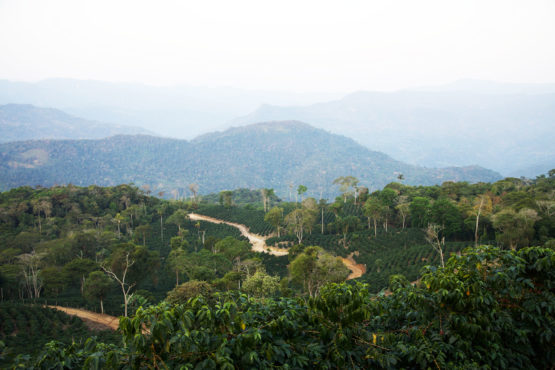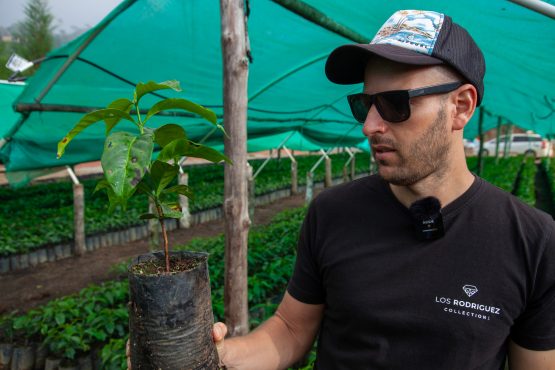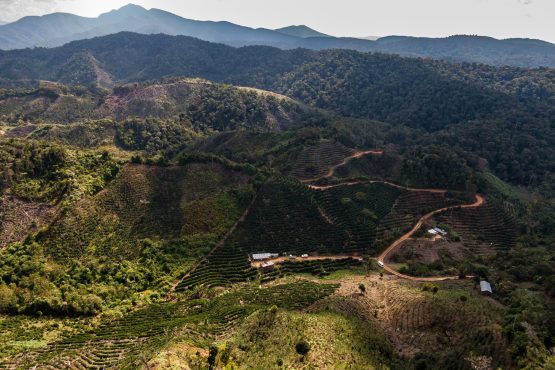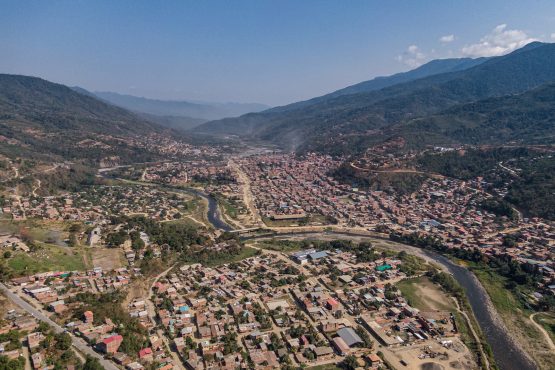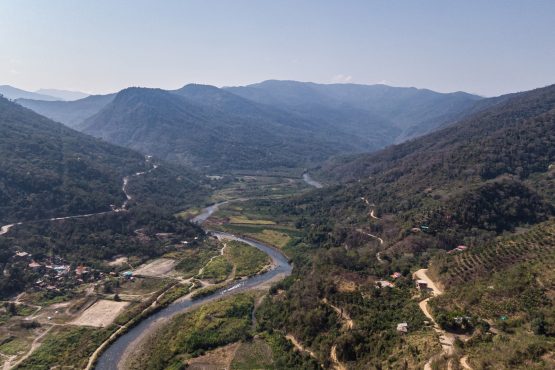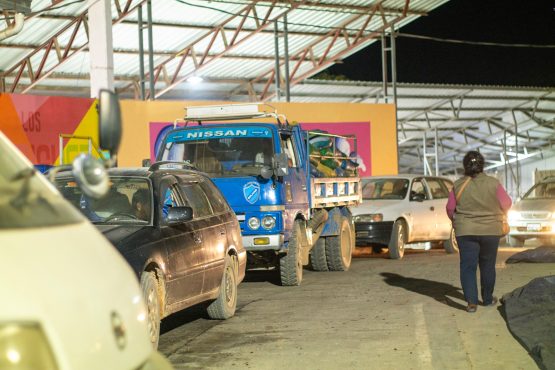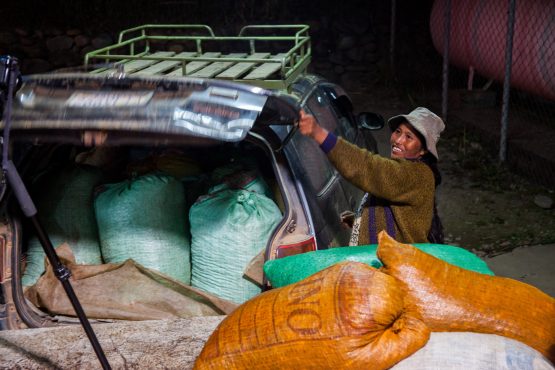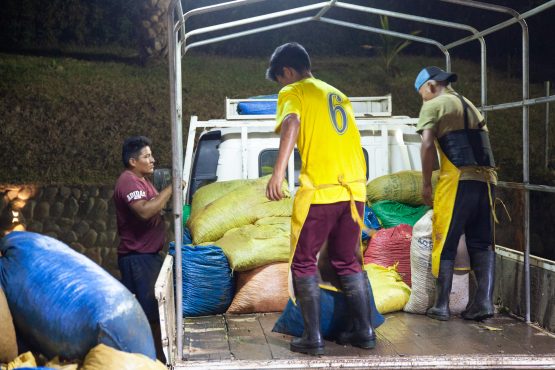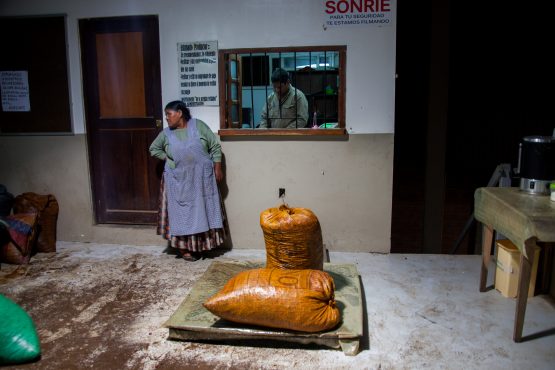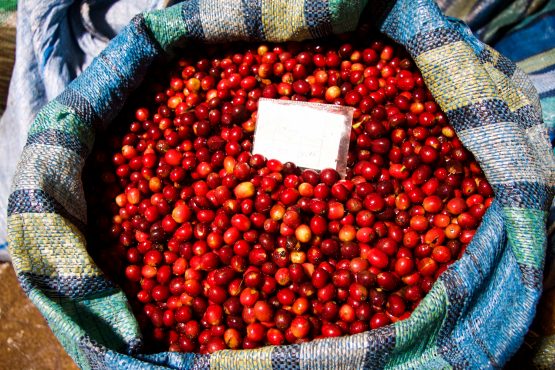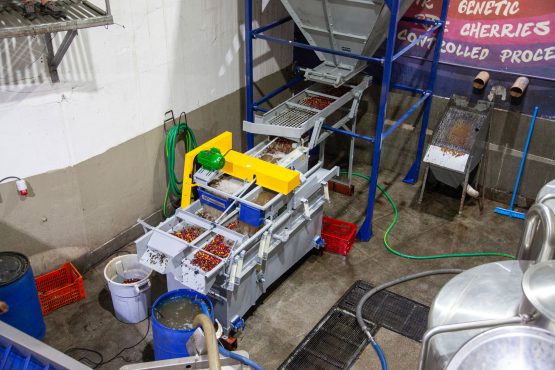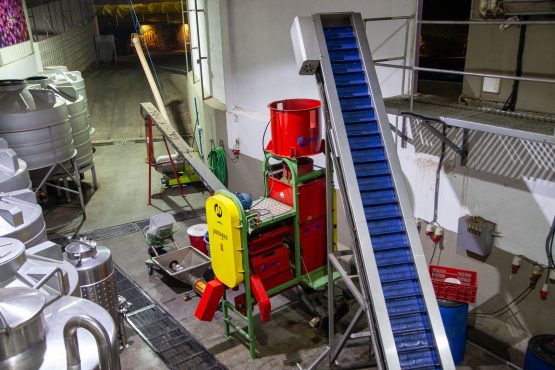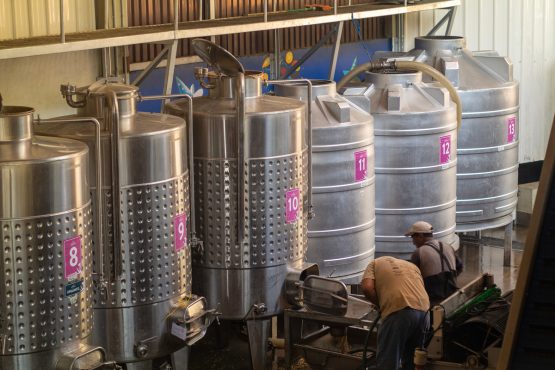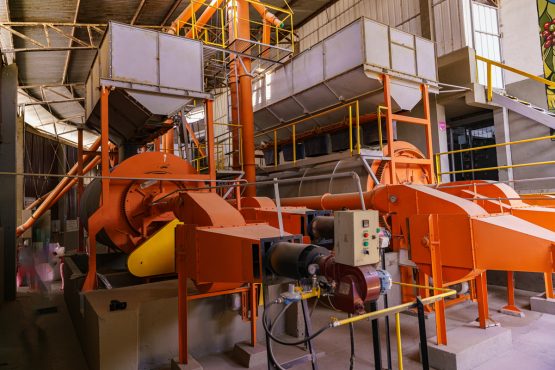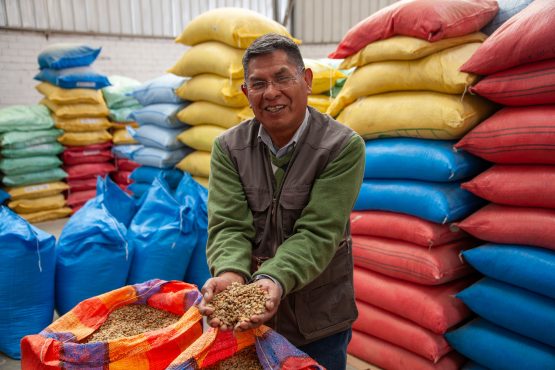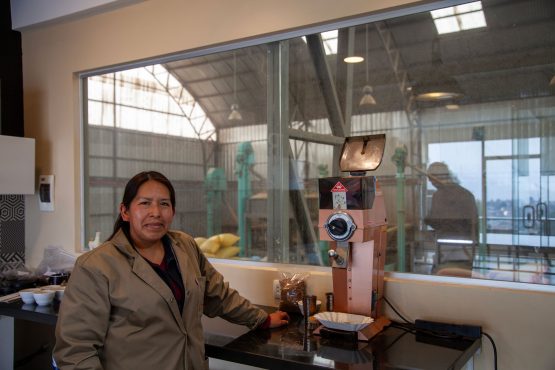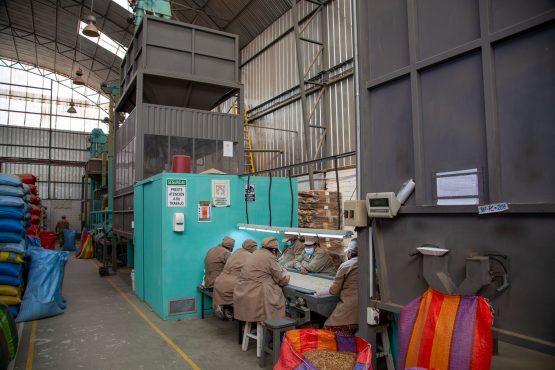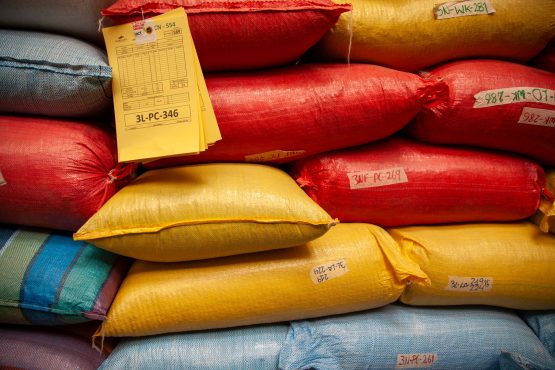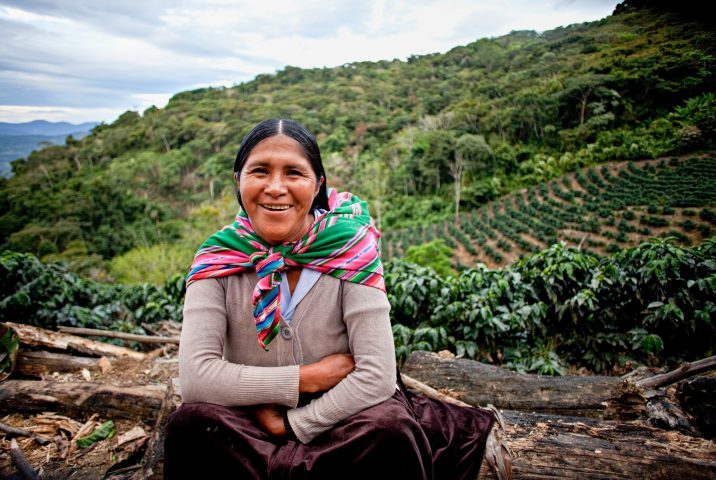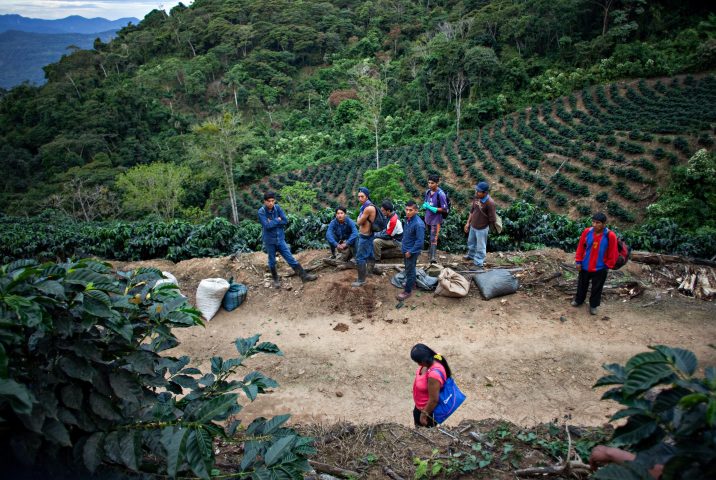Sol de la Mañana Peaberry
Great clarity and sweetness, with apricot, white tea and milk chocolate. Crisp and clean.
This peaberry microlot is made up of coffee grown by Carmela Aduviri, Julio Gonzales, Julio Palli, Gregorio Palli and Vicente Palli, five producers who are part of the Sol de la Mañana progam, an initiative set out to improve Bolivia’s falling coffee yields by teaching farmers more effective farming practices that contribute to a more profitable and sustainable future for coffee production in Bolivia. Sol de la Mañana is part of the influential Rodríguez family‘s efforts to boost specialty coffee production in the country.
Through Sol de la Mañana, Pedro, Daniela and Pedro Pablo Rodríguez, who own the exporting company Agricafe along with 12 farms collectively known as “Fincas Los Rodríguez,” work with some of the most conscientious and quality-focused growers in the Bolivian regions of Caranavi and Taipiplaya. The program came about in 2014, after 10 local producers approached Pedro Pablo and asked for help. “We realized that we had a certain responsibility in not only managing our own farms, but also helping the producers that had been delivering coffee to us for many years. As a family, we saw the responsibility to work against this trend and save Bolivian coffee culture, because if we did not take it, Bolivian coffee would have slowly disappeared. We see this as a duty we owe to Bolivia.”
HOW THE PROGRAM WORKS
The Sol de La Mañana program is set up as a ‘school for producers,’ starting with the basics. The curriculum focuses on one aspect of farming at a time and covers things such as how to build a nursery, how and when to use fertiliser, how to prune and how to selectively pick. “We require that the producers meet deadlines for each topic. Those who are unable to meet the deadlines are asked to re-join the program the following year. We have been intentionally strict as we want the group to learn the right way and to succeed and see the results” explains Pedro Pablo.
The Rodriguez family have also built a model farm and nursery at their Buena Vista mill, which is located in the producing region of Caranavi. The location of these is key, as it is close by to many of the enrolled producers. “We want to show the producers how to set up good practices right from the start. We show them how to select good seedlings and prepare and look after the soil and care for the trees.” Historically, most producers have not regularly pruned their trees, as they worry about the impact on yield. “We educate them about the importance of systematic pruning and show them how to do it.”
Using modern techniques learnt by Pedro Pablo while studying agriculture in Honduras, and with the assistance of international consultants, Agricafe introduced a level of expertise to coffee farming that was new to producers in the region. Initially, these new techniques raised some eyebrows among their neighbours, though they have since been won over by the program’s successes, “Some producers believed we were growing coca or had magic coffee beans as they had never seen coffee grow like this,” Pedro Pablo remembers.
Building trust has been crucial to Sol de la Mañana’s success. Initially, this was a tough ask, related Pedro Pablo, “In the beginning there was a lot of confusion, they didn’t believe us or trust us. Some members had been working in coffee farms for 30 – 40 years and we had only been producing coffee ourselves for a couple of years.” After taking the first steps to start their own nurseries and having tangible results, many producers changed their minds; “They were surprised and became very thankful and open to suggestions. They started to believe it was possible.”
Today, Pedro Pablo is assisted by two agronomists: Rodrigo Frigerio and Fabricio Bordón. The team members visit all of the members of the Sol de Mañana program every month and provide them with personalised technical assistance and agricultural advice. Even the simplest advice can go a long way. “We discovered some producers were not completely stripping their trees of coffee cherries at the end of harvest” Daniela explained. “This is very important and if you do not do it, you will dramatically reduce the following year’s productivity.”
Once a producer wants to enrol in the program, they get a visit from Agricafe, to see the state of their farm. They then work out a plan that tells them month-to-month, and even week-to-week, what activities they need to be doing. All members start with a nursery, which gets planted after their first harvest in the program, so that by year two, they have trees generating an income. Agricafe discourages producers from ripping everything up as they establish new practices; instead, members are advised to make the transition plot by plot. Year three is usually the first proper harvest, at which point, program members set up another nursery. Year four is when the trees are most productive — which also means, trees need the most nutrition once the harvest is completed. This is a real test for members, because if the large volumes become distracting, and they fail to feed their plantation properly, year five can be disastrous. Once a producer is established in the program, pruning rotations begin every year — but always in rotation to ensure cash continues to flow in steadily.
The program has come a long way since its inception in 2014. In its first year of operation, Sol de La Mañana was made up of just 10 committed producers (including our long-time producing partners, the Mamani family). Their first official production was harvested in 2017, and they and Agricafe were delighted with the results: cup quality increased, and producer yields doubled to around 20 bags a hectare. Sol de La Mañana has grown to support over 100 small holder producers in the Caranavi region. The program’s impact has been profound, and far beyond the Rodríguez family’s initial expectations. Production was up 200% in 2020, and the ripple effect of the familiy’s work is starting to be evident, as neighbouring farms have started to emulate the Sol de la Mañana producers’ farming techniques. The key to its success, according to Daniela, is that the producers feel empowered.
“We are giving them the tools and know-how, but they are actively choosing to follow our advice and invest in their farms. Now they can see the results, they trust us 100% and helping their neighbours achieve similar results.”
This is exactly what the Rodríguez family want and need the program to do. To scale the program up, they intend to train leading famers within each of the colonias (a group of small farms), with the intention that they will then share the knowledge they gain with the surrounding coffee community. As Pedro Pablo explains, this is where the program becomes really powerful: “At first, we did all the talking, but now the producers are much more proactive and engaged. They come to us with specific questions and share their results and what they have learnt with each other. This is the real success of the program, as it has given the control back to the producers.”
ABOUT CARANAVI
The inhabitants of Caranavi first started farming coffee in the 1950s, when a government-led agrarian reform resulted in small parcels of land (of around 10 hectares in size each) being redistributed back to thousands of largely Aymara families. The Aymara are one of Bolivia’s 36 indigenous nations, who originally lived on the highlands of the Altiplano (a vast plateau of the central Andes that stretches from southern Peru to Bolivia and into northern Chile and Argentina). Along with the Quechuas, who lived in the Bolivian lowlands, both groups immigrated to Caranavi to find a better life through agriculture.
The municipality is located in the Yungas ecoregion, one of South America’s most fertile and diverse locations. The region runs along both sides of the Andes Mountains, and is known for the world’s highest lake, called Titicaca. In the Quechua language, Yungas translates to “the warm lands,” in reference to the rainy, yet warm climate experienced in the region.
Many families in Caranavi, including the Mamanis, used to depend on the local market to sell their coffee, which meant low prices and little reliability. Now, they selectively pick their coffee cherries and sell their top-grade coffees for substantially higher prices to our partners the Rodríguez family of Agricafe, who process specialty lots at their wet mill in town.
HOW THIS COFFEE WAS PROCESSED
Sol de la Mañana producers deliver most of their cherry to Buena Vista for processing. This meticulously run washing station is owned by Agricafe, who painstakingly process each of the exceptional specialty lots they receive separately, allowing for full traceability back to the individual farmer or settlement. Because peaberry volumes are so low, this lot is a combined blend from several contributors’ coffees.
Agricafe draw a lot of inspiration from the wine industry in their approach to coffee production, and are always innovating and trialling different processing techniques at Buena Vista. This coffee was processed with experimental techniques, part of the Rodriguez family’s long term strategy to achieve the greatest distinction and diversity in their special lots. Watch the video below to see how this coffee was processed:
Evenings at the mill are always bustling as arrivals of fresh cherries begin in the late afternoon, after the day’s picking, and continue deep into the night. It is widely known around Caranavi that only perfectly ripe cherries will be accepted by this mill and all lots are inspected on arrival prior to processing. In an arrangement somewhat unique to this mill, many farmers use taxis to deliver coffee, and by 7 pm a long line of taxis forms along the road leading to the mill.
Cherries for this lot were delivered to Agricafe’s state of the art mill Buena Vista in the evening. After being inspected and weighed, the coffee cherry was carefully sorted by weight using water and disinfected, in a large capacity machine the Rodríguez family have dubbed ‘La Maravilla,’ which translates to ‘the wonder’ due to its efficiency. Following this, the coffee was transported to the mill’s new, water-efficient Penagos mechanical pulper using a conveyor belt. Not only do these pieces of equipment use significantly less resources than in previous years, but they both recirculate water several times before it is treated and returned to the local waterways.
It was then fermented in a sealed stainless steel tank for 48 hours. The team at Buena Vista made sure the lid remained shut for the full period of fermentation, to ensure no oxygen touched the cherries and that the punch-like, boozy aroma remained trapped inside. The wet parchment was then washed with fresh, clean water and carefully machine-dried for 105 hours using a ‘guardiola,’ a horizontal, rotating drum that gets rid of moisture by creating a warm, consistent flow of air around the coffee.
Once the coffee was dry, it was transported to La Paz where it was rested before being milled at Agricafe’s dry mill, La Luna. At this state-of-the-art mill, the coffee was first hulled and sorted using machinery, and then by a team of workers who meticulously sorted the coffee again (this time by hand) under UV and natural light. The mill is one of the cleanest and most impressive we have seen – you can read more about it here.
